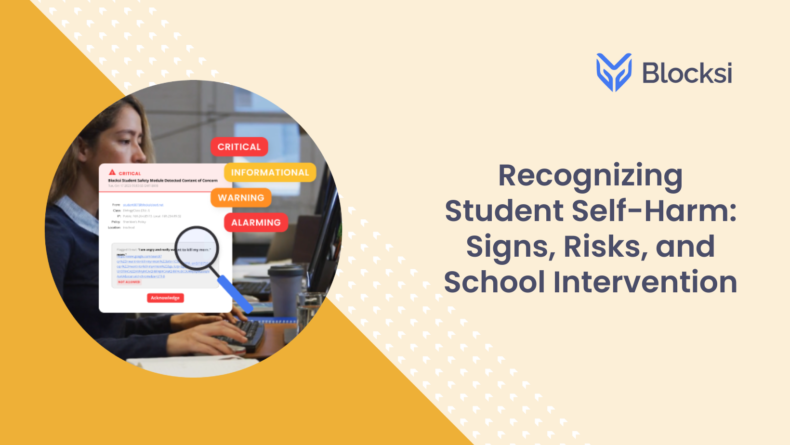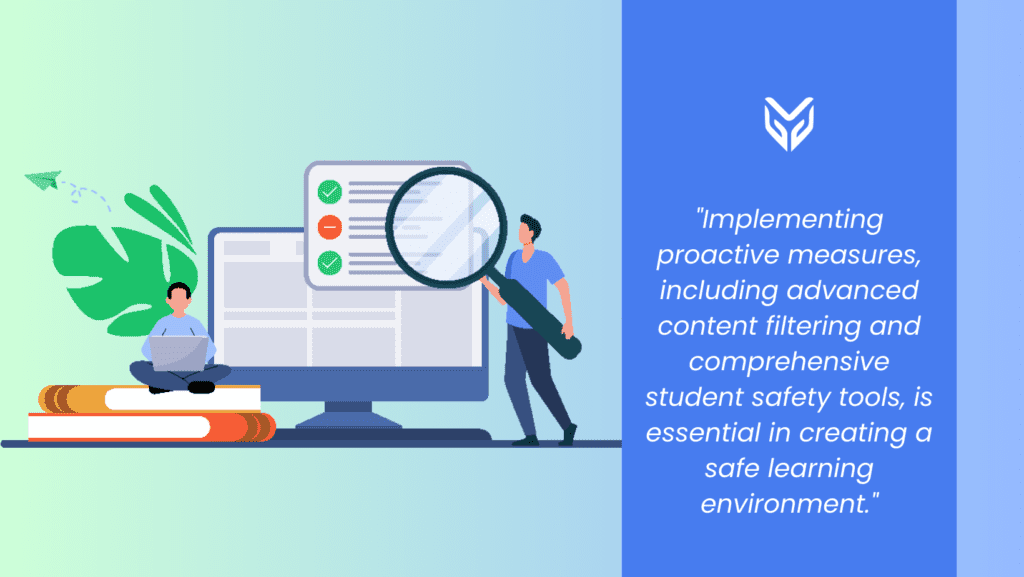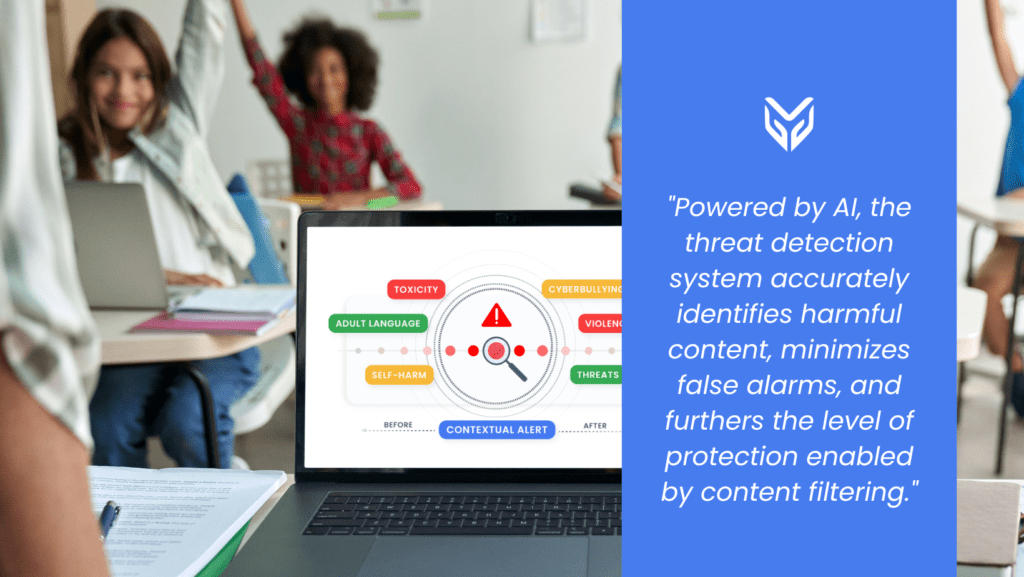NEWS
Recognizing Student Self-Harm: Signs, Risks, and School Intervention

In today’s education, ensuring the safety and well-being of students extends far beyond physical security to ensure student well-being and mental health. Among the challenges faced by educators is the task of recognizing student self-harm, a critical aspect of student safety. Early recognition of such behaviors is essential in facilitating timely intervention and offering educators support to react and mitigate potential harm.
The Importance of Recognizing Student Self-Harm
Student well-being is a primary concern for educational institutions, yet recognizing student self-harm can be challenging. Often, students may exhibit subtle changes in behavior or communication patterns, making it difficult for teachers to discern underlying issues. However, the significance of early detection cannot be overstated, as it enables educators to provide necessary assistance and prevent the escalation of distressing situations.

Signs of Student Self-Harm
Recognizing indicators of self-harm in students requires vigilance and awareness. Behavioral changes, such as withdrawal from social activities, sudden mood swings, or declining academic performance, may signify underlying emotional distress. Additionally, physical signs such as unexplained injuries, wearing concealing clothing regardless of weather, or frequent trips to the restroom may raise concerns about self-harming behaviors.
Risks of Ignoring Student Self-Harm
Failure to identify and address occurrences of student self-harm poses significant risks to their well-being. When left unattended, mental health issues can worsen, potentially leading to more severe consequences, including suicidal ideation or attempts. Ignoring warning signs not only perpetuates the cycle of distress but also denies students the opportunity to receive the support and assistance they desperately need.
The Role of Schools in Intervention
Educational institutions play a crucial role in intervening and providing support to students struggling with self-harm. Implementing proactive measures, including advanced content filtering and comprehensive student safety tools, is essential in creating a safe learning environment. By leveraging such technology, schools can detect concerning behaviors early and initiate timely interventions to address student needs effectively.

Utilizing Advanced Student Safety Tools
Effective student safety tools, such as cloud-based filtering solutions and K-12 threat detection systems, are invaluable assets in safeguarding student well-being. These tools continuously monitor students’ online activities, identifying potentially harmful content and providing early warnings to educators. With customizable filtering policies, administrators can tailor the protection measures to suit their school community’s unique needs and values.
The Benefits of Cloud-Based Filtering Solutions
Cloud-based filtering solutions, like Blocksi, offer robust filtering capabilities that shield students from accessing harmful content. With a service uptime of 99.99% and seamless cluster technology, the solution guarantees uninterrupted protection for students. Administrators and educators have the flexibility to customize filtering policies and make exceptions, ensuring filtering is customized for each learning group and its needs.
Enhanced K-12 Threat Detection
In addition to content filtering, our solution provides double K-12 threat protection through comprehensive scanning of Google Workspace and Outlook activities. Powered by AI, the threat detection system accurately identifies harmful content, minimizes false alarms, and furthers the level of protection enabled by content filtering. Each detected threat undergoes meticulous human review by our expert team, ensuring prompt action and timely intervention to safeguard students’ well-being.

Extending Protection Beyond School Hours
For added reassurance, parents can decide to extend the filtering and threat detection services beyond school hours. This ensures continuous monitoring and support, even outside the confines of the classroom. By prioritizing student safety and well-being, educational institutions can foster a culture of caring and support that allows students to thrive both intellectually and emotionally.
Ensuring Student Well-being Is Our Shared Top Priority
In conclusion, promptly recognizing student self-harm is critical for ensuring your students stay healthy and safe. By leveraging advanced student safety protection backed by content filtering, you can rest assured you will effectively detect signs of distress among students and have the time to urge before any harm comes to them.
With customizable policies and proactive round-the-clock 24/7/365 monitoring, we give you the empowering tools to intervene early and provide the necessary support to students in need. Reach out to us and see how we put student well-being and efficient learning first always.
SOURCES
[1] Identifying Different Types of Self-Harm in Teens
[2] Most Schools Have Early-Warning Systems. Some Kids Are Still Getting Lost





